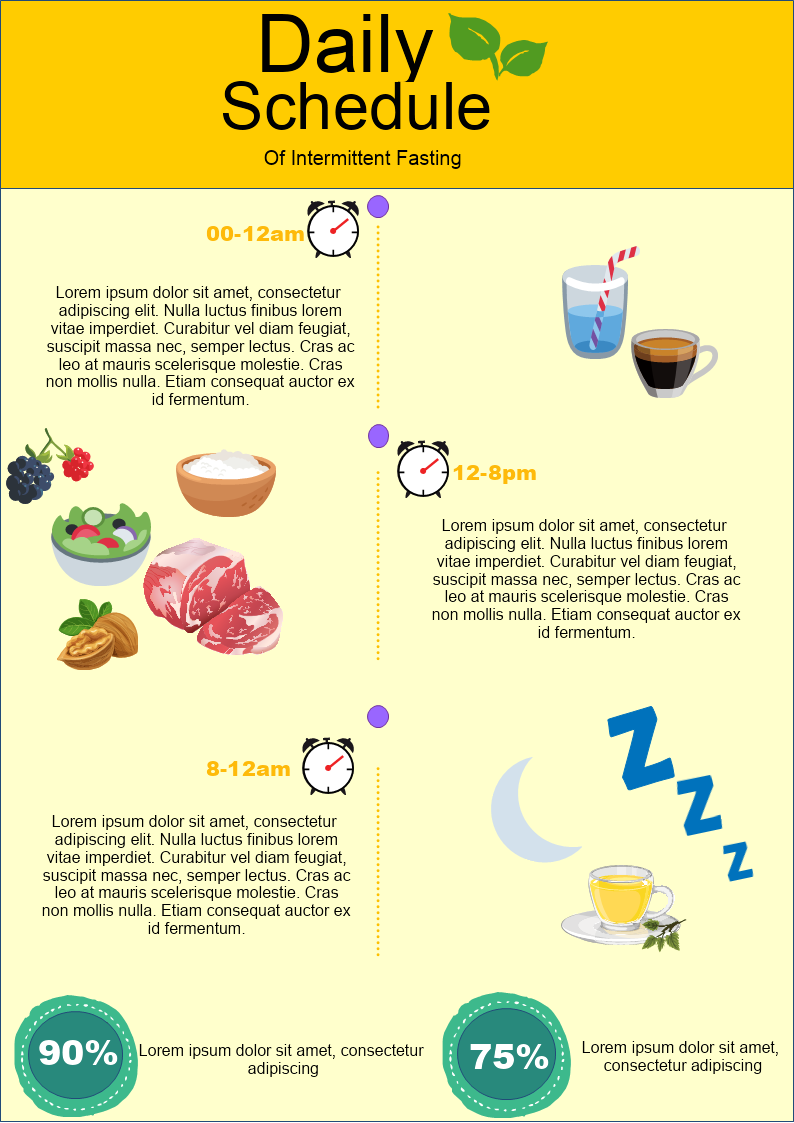This is a free Daily Schedule of Intermittent Fasting infographic template to help you plan your healthy weekly routine. With this infographic template, you can easily organize your eating and fasting periods to fit your working schedule and stay productive. The template is a 100% customizable and you can edit every aspect of it with a few simple clicks in MyDraw.
Download Template:


Download Template:



Nowadays intermittent fasting has become a popular health and fitness plan. Most people have turned to this routine to improve their health, to lose weight, or rearrange their lifestyle choices. Intermittent fasting does not restrict the type of food, but rather restricts the periods in which you consume the meals. The most popular plan is the 16:8 method( 16 hours of fasting and 8 hours of eating). They are however variants such as the 5:2 method, alternate-day fasting, eat-stop-eat diet, the 14:10 diet.
The most popular types of intermittent fasting
- The 16:8 method-It involves skipping breakfast and restricting your daily eating period to 8 hours, such as 1–9 p.m. Then you fast for 16 hours in between.
- Eat-Stop-Eat-It involves fasting for 24 hours, once or twice a week, for example by not eating from dinner one day until dinner the next day.
- The 5:2 diet-With this method, you consume only 500–600 calories on two non-consecutive days of the week, but eat normally during the other 5 days.
Which diet method to choose?
- Before starting a fasting diet consult with your medical practitioner.
- Experiment
- Begin with a larger eating window.
- With the right fasting diet, you can regain control over your eating habits.
How it affects your body?
- Your body adjusts hormone levels to make stored body fat more accessible.
- Your cells initiate important repair processes and change the expression of genes.
- Human Growth Hormone (HGH)- The levels of growth hormone increase, which benefits for fat loss and muscle gain.
- Levels of insulin drop dramatically- The lower insulin levels make stored body fat more accessible.
- Cellular repair- This includes autophagy, where cells digest and remove old and dysfunctional proteins that build up inside cells.
- Gene expression- There are changes in the function of genes related to longevity and protection against disease.
